NFTs
Non-Fungible Tokens (NFTs) and Brand Building

BRIAN KENNY: On March 21, 2006, Jack Dorsey, founder of Twitter, launched a communications revolution with the phrase, “just set up my twttr” all lowercase. Little did he know that 15 years, hence almost to the day, those 16 characters would net him $2.9 million. More specifically, a digital image of this first ever tweet was sold at auction as an NFT or Non-Fungible Token. If you’re not sure what that means, you’re not alone. And you might be wondering why people are paying millions of dollars for digital imagery that pretty much everyone can access or download. No need to hop a flight to Paris to view this art. It’s right there on your browser. You might be asking, “Is this really a thing?” Yes, it is. The better question: is it here to stay? Today on Cold Call we welcome Professor Scott Duke Kominers and guest Steve Kaczynski to discuss the case, “Bored Ape Yacht Club: Navigating the NFT World.” I’m your host, Brian Kenny, and you’re listening to Cold Call on the HBR podcast network.
Scott Duke Kominers is an economist and member of the Entrepreneurial Management Unit at Harvard Business School. Steve Kaczynski is a tech entrepreneur, consultant, and commentator, and they are both the co-authors of the new book, The Everything Token, How NFTs and Web3 Will Transform The Way We Buy, Sell, And Create. Welcome both to Cold Call. It’s great to have you guys here.
STEVE KACZYNSKI: Thanks for having us.
SCOTT KOMINERS: Thanks so much
BRIAN KENNY: Scott, I’m going to ask you to kick it off here by telling us what the central issue is in the case and what your cold call is when you start this case in class?
SCOTT KOMINERS: So, the Bored Ape Yacht Club, just to set a little bit of context, is a case about a series of non-fungible tokens called the Bored Ape Yacht Club that were non-fungible tokens associated to images of randomly generated apes with a variety of characteristics. They’re cartoon apes and they have funny hats and facial expressions and so forth. Some of them very serious looking facial expressions, but uniformly they’re all a little bit bored. And the Bored Ape Yacht Club started as an NFT project and became the foundation of a digital brand that was pursued and pushed forward both by its parent company, Yuga Labs, and by third parties, members of the club, people who owned these NFTs and wanted in different ways to engage with them. And as we’ll talk about a little bit later, the way in which they develop this digital brand sketches out a pattern and framework for thinking about building NFT business. But the first question, which is you queued it very nicely with your description at the beginning, and the opening question of the class is like, why would anybody pay anything for a digital record associated to a public image of an ape; cartoon or otherwise?
BRIAN KENNY: I’m glad that I’m not alone in this.
SCOTT KOMINERS: It’s a good opening question, right, because it generates some curiosity and tension in the class because, what? And at the time the case traces the various sales and sales history, and at the time the case is set there had been some very high profile sales. Some of them had been acquired for very large sums of money by various influencers and sports and music stars and so forth. And the typical student response is, “I don’t get it. Is this even an asset? What is this thing? It’s just a digital record and a public image.”
BRIAN KENNY: So, you’ve got this new book that’s come out recently and you chose this case as a way to surface the ideas in the book. Can you tell me why this was the right case to talk about?
STEVE KACZYNSKI: I think that this case is representative of the big question that people ask, and I think starting off with this case is actually really important because it was a very public facing one. As Scott mentioned, you would see these large scale music stars like Snoop Dogg and Eminem buying and utilizing these in their music videos and around the web. There was a ton of these influential personalities who were buying them. So, because it got so much attention, we thought it was the ultimate question to open with, because part of our goal in the book is as we’ll get into NFTs and cryptocurrency in general is just an underlying software layer that presents a better use of technology for a variety of applications.
This particular case is I think the one people see and say, wait a minute, this doesn’t make any sense to me. And immediately associate with NFT is an overpriced image on the internet. And what we wanted to do was meet people where they are and help them understand, look, it’s actually very reasonable to say this doesn’t make any sense on its face. And we wanted to let people know that that is a very reasonable thought to have as you walk into it. And we didn’t want to come in and say, no, no, no, you’re silly because you don’t understand it. Rather introduce the premise as being seemingly ridiculous and then peel back the onion a little bit to show why it actually makes a lot of sense.
BRIAN KENNY: Okay, that’s helpful. So, Scott, let me come back to you for a second. All right, so Scott, let me turn back to you for a second. Just for people who still are having trouble wrapping their brains around this. Can you please just put a definition to a non-fungible token and give us some examples of other kinds of NFTs?
SCOTT KOMINERS: Absolutely. So, a non-fungible token is a digital record of ownership. You should think of it as like a digital deed. And that digital deed can be linked to a variety of different assets. It could be something like a deed to a digital image, like in the context of the bored apes we were just mentioning, or a link to ownership of a digital ticket or an identity record. Some sort of way to prove that you are who you are or that you have a data record that you created some content on the internet, it’s yours, you own it. Or could even attach to physical assets. We’ve seen NFTs used both to complement physical assets. So, you get a physical asset in a digital twin, or as ownership records to ease markets and physical assets. Maybe you are trying to transact over something that’s hard to move or difficult to store safely. And instead of actually transporting the object, you trade the non-fungible token. And people have used ledgers in this way for a long time. But what’s special about non-fungible tokens is that they plug into a different model of the internet where users have their own sort of master accounts, these central accounts that they can use across different platforms in which they control their digital assets and can move them around in the same way you might be able to take physical assets with you. And that’s the foundation of Web3.
BRIAN KENNY: Okay, that that’s really helpful. Steve, I’m going to come back to you for a second. This is a broader question and it gets a little bit to the notion of the amounts of money that are being paid for these NFTs, the age-old question of what makes art valuable. How are people deciding what the right value is to put on these digital assets, especially when they are accessible by anybody pretty much anywhere?
STEVE KACZYNSKI: Well, what makes these incredibly interesting assets is once you own them and can have infallible proof of ownership, you can actually build on top of them different sets of utility. So, a lot of people ask this question where they say, why would anyone pay thousands of dollars for an NFT? And my answer to that is think of an NFT as the thing that powers what you have. As Scott mentioned, a ticket, a loyalty reward, a real world asset that is backed by it, such as if you have a Babe Ruth card. So, similarly, to make a couple analogies, if I have a QR code that is a thing that powers a ticket, I see one QR code that takes me to the Super Bowl, well that’s a $10,000 QR code. I see another one that takes me to a regular season baseball game that might be a $14 QR code, the same exact technology has different value to it. And very similar when I talk about real world assets, one of the really interesting applications of NFTs, if I peg a real world asset to a Babe Ruth card, again, that might be $8,000 that someone’s willing to pay for that NFT associated. But a player that maybe doesn’t sniff the majors too much might be a 32 cent NFT. It is what the NFT represents and the utility that you build on top of it, right? The utility of getting to the Super Bowl versus the utility of getting into a regular season baseball game is very different in value. And so, the NFT itself and what it does now, of course art is a different subject to your point. You could say one piece of art versus another one, but it’s actually what the NFT does that tends to drive the value.
BRIAN KENNY: So, I couldn’t help as I was doing my research for the show to notice the fact that some of the amounts that people are paying are astronomical, as we’ve talked about. And most artists back in the day didn’t get recognition for their work until they were already dead. So, Scott, I’m going to turn to you and ask you this question. Are NFTs in some way leveling the playing field for content creators so they can reap some of those rewards while they’re still here?
SCOTT KOMINERS: What is definitely clear is that NFTs have enabled access for a wide range of creators, artists, musicians, people who want to create various forms of other media content, but also sort of organizers of groups and organizations and clubs and so forth, as well as large and established brands that are building around new creative digital ventures. And the reason for this is that NFTs are a publicly accessible technology. The ones we’ve been talking about so far are based on public blockchains. These are sort of open software networks. And anyone who wants can go in and create non-fungible tokens and distribute them in various ways without the need for an intermediary like a gallery or a record label or something of the sort. And this means that it’s much easier to gain access, right? If you are a visual image creator or a musician or whatever, you have a direct path to sell to your fans, your consumers, and using this technology and you can interact with them and sort of find them. The technology also sort of anchors a network of your fans and gives you a way to be in touch with them in a very powerful two-sided and direct communication.
STEVE KACZYNSKI: And if I can build one piece on top of that, I would add in, to your point about artists, one of the nice functions of NFTs is that they are a programmable software. So, if I sell you a piece of art and then you sell that to someone else, you reap all of the benefits. But by having a piece of programmable software, to your point, if I sell you a piece of digital art tied to an NFT, you can actually program in a way that every time it’s sold, I still get a royalty as the original artist. Meaning that while they’re alive, to your point, if they are selling and that art does do well, they don’t sort of lose that benefit once the artist sold once, but instead in perpetuity they can actually create a income stream. And you can think of how this could apply to musicians or other types of artists as well.
BRIAN KENNY: Yeah, of course, of course. So, let’s turn to the Bored Ape Yacht Club. Scott, I’ll go back to you on this. Well first of all, what is it and did it exist before NFTs or does it exist because of NFTs?
SCOTT KOMINERS: So, the Bored Ape Yacht Club is one of the earliest examples of a fully realized NFT native brand. I would say one of the earliest prominent examples. I suppose there have been versions of this for years, you might’ve heard of some famous historical ones like CryptoKitties or CryptoPunks and various instances, the Bored Ape Yacht Club was created as a series of NFTs associated to these ape images. The images were assembled at the time when you minted the NFT. So literally the action you took to create the digital record of ownership also generated the associated image. So it was sort of a component of the actual minting creation process created the ape from, I would say, thin air, from banana air. I don’t know, Steve, you probably have a better joke to put in there.
But then what has come out from them has built around the tokens sort of first various forms of utility and functionality built on top of them. People who had apes were able to claim other digital assets, gain access to certain physical merchandise and eventually activities, all of that from the company. But then also they gained intellectual property rights. They had the right to build products, even commercial products around their apes. And then many people went on to build various forms of utility and functionality on top of them, right? The tokens are publicly accessible. Anybody who wants can verify ownership of an ape in the same way they might check your ID card when you walk into a restaurant, someone can check your ape ID and then give you a discount or a cool feature.
BRIAN KENNY: But anybody can download an ape. These are literally just digital images of an ape.
SCOTT KOMINERS: Great question. Anybody can download the image of the ape, but only the owner of the NFT can prove that they are the owner of the image. And so, in that sense, if for example, you are going to log into a digital clubhouse that members of the Bored Ape Yacht Club have access to, you connect your digital wallet, you certify and prove basically to the website that you hold this NFT and then it lets you in and somebody else who has the image can’t do that. Steve, I know you have a really good story to explain this one, so maybe toss it to you for a sec.
STEVE KACZYNSKI: Yeah, absolutely. Our friend, Adam Hollander, has a great analogy related to this. Which is, imagine you go into a museum and you see a beautiful painting on the wall. You can take a picture of that painting, but that picture isn’t worth anything, right? You can buy a print in the gift shop, but that print isn’t really worth anything at all either. The reason why the one on the wall is worth so much money is it’s the original. The museum owns it, and they can prove both of those things.
So, to make Scott’s analogy, I could say, look, I could right-click and download a picture of Shaquille O’Neal, the basketball player and then try to pick up his checks from his endorsements. But they’re not probably going to give them to me unless I can verify that I am in fact Shaquille. And that’s how it is very similar. You can take a picture of a Ferrari, but you can’t drive that Ferrari. It doesn’t give you the ability to do it. And it’s very similar, but in a digital sense. And to Scott’s point, to use the digital clubhouse example, as a personal anecdote, I bought one of these digital monkeys or digital apes very early on, and through them I’ve actually met people in this decentralized network that have led to job opportunities, that have led to deal flow and various other things in my life that have actually led to new careers. So, the value of getting into those spaces becomes higher based on that, and that drives up value on top of the other utilities that go along with it.
BRIAN KENNY: Okay, so that leads to another question that I had, which is, so there are no yachts anywhere. Let’s just put that aside. But the idea of the Bored Ape Yacht Club is really, it’s a network of people who are interested in the same things. They share experiences, as you said, they can help each other out in different ways. What are some of the added benefits of being in the club, so to speak?
STEVE KACZYNSKI: Hilariously, one of the early utilities was a yacht party that they threw in New York around Halloween of 2021, followed by… To give you an example, one of the first utilities, they had this surprise warehouse event where you thought that you were just going to get free food and drinks with your friends, which would’ve been enough for me, because the network of people are everybody spanning from people like myself who worked in marketing to people who were developers, to people who were celebrities, to people who were Jeopardy champions. And so I just thought that was good enough. Well, we showed up and much to our surprise, again, this quote unquote “token gated thing.” So, you had to prove ownership in order to get in. You couldn’t just show an image, they would scan and make sure it’s in your wallet.
All of a sudden we hear a voice and it is Chris Rock, the famous comedian giving a set followed by a performance by Beck, one of the big artists and Lil Baby, who was a popular artist, who was a little before my generation, but the kids sure seemed excited about him. And so we saw these sort of things. And last year they had different LCD sound system and Eminem and Snoop Dogg and Future and all these other big performers. And so these mega concerts they’ve thrown are events that you get access to again, with food and drinks and other benefits and merchandise and things that other people are unable to get.
But again, for me, the value often comes in that network. And that’s where I’ve seen a lot of value. It’s almost like when you’re in a country club and people join a country club, they pay tens of thousands of dollars, hundreds of thousands of dollars a years to join these things. And they’re limited geographically. They’re probably not going to meet everybody. They’re probably golfing with the same 5 to 10 people on a regular basis, on a monthly basis for a period of time. If you join the Bored Ape Yacht Club, the people who come in and go who have access to these tokens are literally all around the world, every continent around the world, countries all around the world with various areas of expertise.
And one of the interesting things I’ve experienced is any new city I’ve gone to, I can say, “Hey, I’m in town, who’s in town.” And somebody I know from the club is in that town. And we’ll say, “These are the restaurants to go to. Let me take you out to my restaurant or my bar or my thing I own.” In fact, I mentioned earlier I do a podcast. Within two weeks of going to New York City, we realized we hadn’t had a setup for this live show we were trying to do.
And somebody in the Bored Ape Yacht Club said, “Look, my friend owns a restaurant, we can open it up early. We can get you food. Why don’t you go there?” And we had a hundred people in that restaurant in a matter of two weeks in New York in one of the most expensive cities in the world able to do it. So, I think the network oftentimes is the value of these. But the other utilities, like the things where you get the extra digital assets and other things programmed on top of it are certainly a nice benefit as well.
BRIAN KENNY: I may need to get the number of that restaurant because we wanted to do a show on the road too, so I’ll talk to you about that after we’re done. Scott, let me come back to you. Let’s talk about the business side of the Bored Ape Yacht Club. How are they making money? How is this sustainable? What are their business objectives?
SCOTT KOMINERS: Great, and just one quick thing to add on top of what Steve just explained, that will feed into the business idea so critically, these types of benefits, sort of the various benefits of being a member of the Bored Ape Yacht Club can come both from the company and sort of at the direction of Yuga Labs, like the company that launched the NFT series, and also from inside the community and even from third party unrelated businesses that just offer a reward to Bored Ape holders, in the same way that museums might offer special access to holders of certain credit cards or something of the sort. And we see all of that. And that third party component is actually a tremendous share of the value. And over time adds all sorts of new opportunities and functionality into the club beyond what the original, leaving aside what the original conception of the brand was, certainly even today’s incarnation of it, beyond what sort of the parent company itself necessarily envisions.
Bored Apes can be realized as avatars or playable characters in various games. There was a community like crowdsourced novel produced by a different NFT project called Jenkins the “Valet, The Writer’s Room” that used Bored Apes in the story. And if you owned an ape, you could have your ape be part of the story or the product in various ways. And so, what’s really going on here is a novel and I think very deeply creative and embedded model of brand building. Where the brand is built by the community, the brand’s greatest enthusiasts do things to drive additional value to the brand and all sorts of dimensions in a way that feeds back to sort of everyone who’s attached. And the reason this works, again, it comes down to NFTs. NFTs are a form of ownership. If you have a bored ape, you have one of a very scarce collection or relatively scarce, there are 10,000 of them, but that’s a small number relative to all the people who might like to hear Beck perform or whatever.
You have a scarce asset that attaches you to this brand, and that gives you sort of like a, both some intellectual property rights to build around the brand. You have literal license to use the ape and your own ventures, whatever they may be, and some incentive to do so. And in the book we use the metaphor of owning versus renting a house. If you’re renting a house and you upgrade the kitchen, what really happens is the landlord accrues most of that value. If you own the house and you upgrade the kitchen, you internalize the benefit for as long as you use the house. And if you later resell it, you capitalize some of the remainder of that benefit sort of in the new sale. And that changes your incentives. You’re much more incentivized to upgrade the kitchen if you’re an owner than if you’re a renter. That same logic underpins a new model of brand building that the Bored Ape Yacht Club popularized and has led to lots of other versions of, whereby by owning these tokens, people become personally invested in the brand.
In the book we talk about an NFT staircase. So, from on a top of ownership is built utility and then identity. You come to identify with the brand and think of it as a core part of yourself and present it as such in digital and maybe even physical spaces. I cannot tell you how many Bored Ape friends I have who are constantly wearing Bored Ape merchandise. And then from there identity breeds community and the community can drive the brand forward in really powerful and surprising ways that often create value far above and beyond what was originally conceived by the parent company.
BRIAN KENNY: I hear everything you’re saying and it all makes sense. I’m wondering about scarcity because it seems like a big part of their brand is built around scarcity. And if you look at, there are a lot of elite brands out there, and scarcity is a big part of why they are elite. Not everybody can access them. So, how does a place like the Bored Ape Yacht Club or anybody who’s building their business around NFTs, how do they grow their audience without losing the value of that scarcity?
SCOTT KOMINERS: You’ve jumped to the last question of the case session. I should say there’s perhaps an overemphasis on scarcity in the crypto space. I think it’s hard to know exactly where it came from, but at some level, the ability to make digital assets scarce was one of the fundamental discoveries that’s embedded in blockchains. If you think about the previous instances of digital assets, music files and images and things, when you copy them to send to a friend, you’re actually making a copy. It’s very hard to have scarcity in digital assets and blockchains restore that. They make it possible. And so, that is, I think sort of fed an overemphasis on scarcity. But as you say, an actual brand has to be able to speak to a broad audience and a growing audience. You want to be able to not just have 10,000 customers. The maximum number of people who could ever own an original Bored Ape is 10,000. And even 10,000 of the greatest network in the world is not enough to sustain a brand into the future. They want to be able to broaden up, they want to be able to reach new audiences. Some of that, by the way, is propelled by the community as they invent new things. So, Bored Ape images have appeared on T-shirts at places like Old Navy and Target and whatever. And to my knowledge, that’s all like individual private licensing from various ape owners. And so, some of it is the community can actually help with that next wave. But also, and this is, as I say, it’s the closing question in the case discussion when I teach it. There’s a real tension here for the parent company. If you have built your initial product on this commitment to never produce any more apes, they added a next series of mutant apes and they committed that. What do you do next? Do you expand? And we pitch it to students. Do you expand into new product categories? Do you start making, do you think of those as the core assets? Those are your Mickey Mouse, but then you’re going to sell merchandise to the entire world? You’re going to produce media and sort of own a media empire built around these assets? 10,000 people own the original Mickey Mouse, but everyone in the world can have a Mickey Mouse keychain. Or do you try and stay very narrow, stay very elite, stay luxury? It’s a real question and it’s a challenge. If you’re this business and you’ve made success and built this very, very dedicated community, how do you open the door to the next audience and who should that audience be?
BRIAN KENNY: Yeah, yeah. Steve, let me come back to you for a second because we haven’t really had a chance to address the main ideas in the book. But I’m wondering if you were to talk to somebody right now who is thinking about investing in NFTs, what kind of advice would you give them?
STEVE KACZYNSKI: I would tell people to understand, not even necessarily looking at it as an investment as much as finding something that resonates with you. Scott mentioned the concept of identity. And one of the analogies we make with NFT communities is akin to sports teams or even a college. I went to the Ohio State University. If I see a stranger in the Denver Airport wearing an Ohio State shirt, I will yell, O-H, and they will yell I-O, and we don’t know each other and we’ll never see each other again. They may be a good person, they may be a bad person, but we have shared identity and community. When people are navigating NFTs, right now, we are very close to the rails with a lot of the NFT technology. And so, because of that, it becomes complex for a lot of people to get into. But for me, it’s like, for example, I’ve had this conversation related to Nike who has a program called Dot Swoosh, and what they did is they sold digital boxes of sneakers. And when you got those digital boxes of sneakers, they came with a really cool animation, they honored all these Nike shoes all over the world from around the years, but the utility of them was they got you into gated drops that nobody else could get. Because if you ever tried to get a piece of Nike gear before in a drop, oftentimes they’re botted. Meaning that people set up these sort of algorithms to beat the system and get 50 of them and then resell them and gouge in the secondary. But what the NFT did was if you had bought this NFT and you had some sense of identity around this, you were able to buy. I walked on, I bought my hoodie, I bought my pair of shoes, no stress, the supply was fixed, no issue there. And because of that, I tell people, if you’re interested in Nike and you like Nike shoes, that’s an NFT you should buy. However, if you’re not interested… If somebody says, I don’t really like Nike, my feet are too wide, they’re a little narrow, don’t buy a Nike NFT. So, I think doing research and understanding why you would join one of these communities or what the utility of the NFT is, or of course if you simply like the art and want to own it, that’s okay too. But understanding the why behind the NFT I think is the most important thing. Because, people will say to me, what do I need to buy to make money? And I’m not looking at the over-financialized aspect when I recommend it, I’m looking at what do you get from it and why would you buy it for that reason.
BRIAN KENNY: Yeah, that makes sense. Scott, I’m going to flip the question and ask you if you are a brand, should you bother dabbling in NFTs? Should you create NFTs to support your brand?
SCOTT KOMINERS: That’s a great question. And to be clear, Steve and I are not trying in our book or in our sort of speaking and broader engagement around this to be active evangelists. We don’t think that every single brand should just drop everything and do this right now. But we think it’s super important for them to be aware of this technology, and the way it’s changing the interaction between ordinary consumers and digital goods, and moreover, brands and internet platforms. Everyone should understand this idea of Web3 as a potentially different architecture for the internet. Where individuals own their digital assets and move them from place to place. And the reason this is important for an established company, is that a lot of the dynamics we’re used to shift. When a user’s digital assets are portable instead of today, sort of your images, your posts, everything is locked in a given social media platform and all of your customer data is embedded in Amazon or an individual company’s shopping site or wherever. As soon as those things all become portable in a universe where you can take your social media identity from one platform to another, or you might have a digital asset that represents your purchasing preferences that you can use to show up in many different places. Now there’s real competition for digital wallet share. You as a brand want to be one of the companies that consumers are representing as themselves as they move from platform to platform. When they can use a single identity in various parts of the internet, they’re actually going to likely to anchor on a smaller set of assets, smaller set of pieces of that digital identity and just use those that small set everywhere instead of having to recreate a new identity in each place. So, you want to be in that digital wallet. And moreover, there are potentials for major shifts in the way competition works. The Web2 business model is built on holding users in the platform and then learning a lot about them and capturing their reputation and identity information. So, it’s really hard for them to move elsewhere.
BRIAN KENNY: And you have to build brand loyalty in a way that you haven’t had to in a long time either.
SCOTT KOMINERS: Absolutely.
BRIAN KENNY: This has been a great conversation. I knew it would be. You guys are really fun to talk to about this, and I have learned a lot. So, we’ve accomplished that. I’m up the learning curve. I have one question left and I will ask each of you. Steve, I’m going to ask you to start. If there’s one thing you want listeners to remember about the Bored Ape Yacht case, what would it be?
STEVE KACZYNSKI: I’d say the one thing to remember is that this was just the thing that spurred a lot of the movement curve on the technology. To me, it’s: don’t focus on the images of the bored ape, focus on the software that empowered it and focus on what it can do for greater society.
SCOTT KOMINERS: I love it. I was going to give a very similar answer, but I’ll maybe at least give a refraction of the answer. The opening question is this puzzle. It’s like, why would anyone ever pay for an image of an ape? And then if someone’s going to do so, how do you even price it? How do you think about what they should be paying or where they form value? But fundamentally, questions of value formation in society have been present forever, and we have all of this history and research and the emergence of new markets and marketplaces around technologies, but what they really do, so the reason we care about this stuff is because it enables us to have better and more complete and more fulfilled experiences. But when these things become widespread, they’re just going to be part of our everyday experience in the same way that the web is today, and it’s more going to be how we use them and what we use them for.
BRIAN KENNY: Scott Duke Kominers. Steve Kaczynski, Great to have you both on the show. Thanks for joining me.
STEVE KACZYNSKI: Thanks for having us.
SCOTT KOMINERS: Thank you so much for having us.
BRIAN KENNY: If you enjoy Cold Call, you might like our other podcasts, After Hours, Climate Rising, Deep Purpose, IdeaCast, Managing the Future of Work, Skydeck, and Women at Work, find them on Apple, Spotify, or wherever you listen. And if you could take a minute to rate and review us, we’d be grateful. If you have any suggestions or just want to say hello, we want to hear from you, email us at coldcall@hbs.edu. Thanks again for joining us, I’m your host Brian Kenny, and you’ve been listening to Cold Call, an official podcast of Harvard Business School and part of the HBR Podcast Network.
NFTs
RTFKT Announces Project Animus Reveal, Launches Egg Unboxing Event Amid Mixed Reactions | NFT CULTURE | NFT News | Web3 Culture
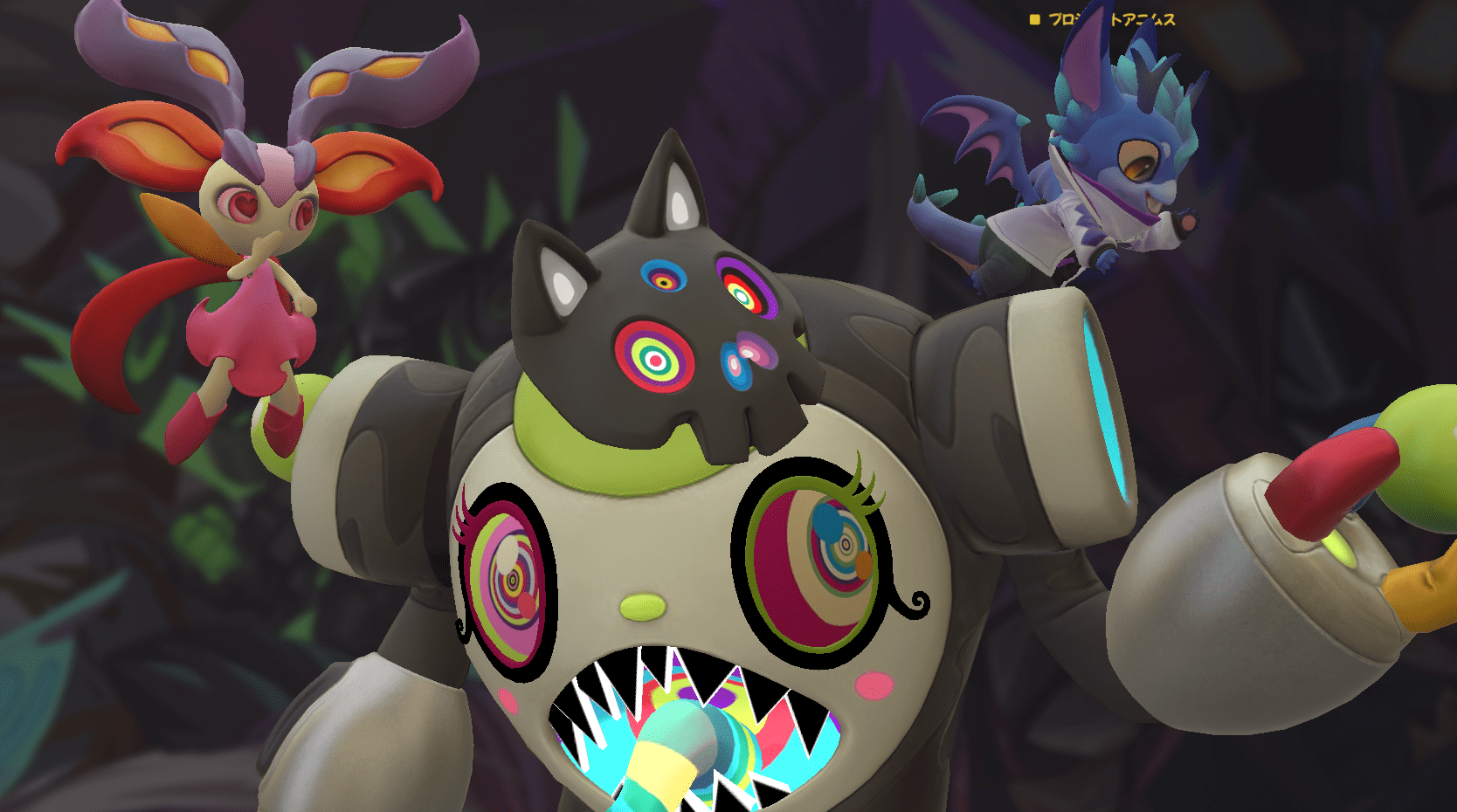
RTFKT, the innovative creator-led company renowned for its cutting-edge sneakers and metaverse collectibles, has officially unveiled its highly anticipated collection, Project Animus. This project marks a significant milestone in RTFKT’s journey, introducing a new dimension to its digital universe after a long period of development. However, the initial market response has been disappointing, with the revealed Animi trading at a floor price of 0.05 ETH, significantly lower than the eggs’ floor price of 0.09 ETH.
The Genesis of the Project Animus
Initially introduced in October 2022, Project Animus introduces a unique ecosystem of digital creatures called Animi. These Animi are designed to enhance Clone X’s avatars, offering an immersive and engaging experience for the community. The recent reveal showcased a diverse range of Animi species, each with distinct design traits and elemental attributes, breaking away from traditional trait-based rarity systems.
A New Digital Frontier: The History and Evolution of Project Animus
The Animus Project is RTFKT’s latest intellectual property, promising to revolutionize the NFT space with its unique digital creatures. The journey kicked off on October 8, 2022, with an interactive teaser event called “The Eggsperience.” This livestream event allowed attendees to explore a virtual Animus Research Facility, generating intrigue and excitement among the community.
Renowned artist Takashi Murakami played a significant role in the project, revealing the first Murakami-themed Animus creature, Saisei, on April 30, 2023. This collaboration added a layer of artistic prestige to the project, further elevating its status within the NFT community.
Animus Egg Incubation: A Journey from Egg to Animi
Clone X NFT holders had the opportunity to claim an Animus Egg until March 1, 2024. This was followed by the Animus Egg Hatching event, which ran from May 7 to June 4, 2024. During this period, holders of several RTFKT NFTs, including Clone X, Space Pod, Loot Pod, Exo Pod, and Lux Pod, were able to use a points-based system to increase their chances of hatching rarer Animi. The limited supply of Project Animus Eggs is capped at 20,000, with no public sale planned.
Mixed market reception
Despite the excitement and innovative features, the market reaction to the reveal of Project Animus has been lukewarm. Animi is currently trading at a floor price of 0.05 ETH, significantly lower than the eggs’ floor price of 0.09 ETH. This discrepancy has led to disappointment among some collectors who had high expectations for the project.
What Awaits Us: The Future of Project Animus
Following the reveal, RTFKT plans to release a collection of exclusive Animus Artist Edition characters. Holders of Clone X Artist Edition NFTs are guaranteed to get one of these special editions. The distribution will include 88 Special Edition Animus, with 8 Mythic (Dragon Sakura), 40 Shiny, and 40 Ghost Animus. The odds of receiving a Special Edition Animus are the same for all Eggs hatched, regardless of the points accumulated.
The remaining Animus characters will be distributed among unhatched Eggs, encompassing Special Edition Animus, as well as Cosmic Animus and Murakami Element from Generation 1, Generation 2, and Generation 3.
Conclusion
RTFKT’s Project Animus represents a bold step forward in the NFT space, combining cutting-edge technology with artistic collaboration to create an immersive and innovative digital ecosystem. However, the initial market reception highlights the challenges of living up to high expectations in the ever-evolving NFT landscape. As the project continues to evolve, it promises to deliver unique experiences and opportunities for its community, solidifying RTFKT’s position as a leader in the metaverse and digital collectibles arena.
Summary: RTFKT has unveiled Project Animus, introducing a unique ecosystem of digital creatures called Animi designed to enhance Clone X avatars. Despite the excitement, market response has been mixed, with Animi trading at a lower floor price than eggs. The project kicked off with an interactive event in October 2022, featuring collaborations with artist Takashi Murakami. Following the reveal, RTFKT will release special edition Animus characters. The total supply of Animus Eggs is limited to 20,000, with no public sale planned.
NFTs
The Olympics have reportedly ditched Mario and Sonic games in favor of mobile and NFTs

The long and historic partnership between Nintendo and Sega to create video games for the Olympics reportedly ended in 2020 as event organizers sought opportunities elsewhere.
Lee Cocker, who served as executive producer on several Mario & Sonic Olympics titles, said Eurogamer the International Olympic Committee let the licensing agreement lapse because it “wanted to look at other partners, NFTs and esports.”
“Basically, the IOC wanted to bring [it] “Turn inward and look for other partners so you can get more money,” Cocker added.
The 2024 Summer Olympics kicked off in Paris last week, but there were no Mario & Sonic games available in time for the event to begin – the first time this has happened since the original release in 2007 to coincide with the 2008 Beijing Summer Olympics.
Over the past two decades, there have been four Mario and Sonic adaptations for the Summer Olympics, as well as two for the Winter Olympics.
This year, instead of a Nintendo/Sega title, the IOC released Olympics Go! Paris 2024, a free-to-play mobile and PC title developed by nWay, which has worked on several Power Rangers games.
Olympics Go! allows players to compete in 12 sports and unlock NFTs from the Paris 2024 digital pin collection.
The original Mario & Sonic at the Olympic Games was announced in March 2007 and marked the first time the two mascots – once archrivals in the console wars of the 1990s – appeared together in a game.
NFTs
DraftKings abruptly shuts down NFT operation, leaving collectors panicking over vast holdings of digital tokens
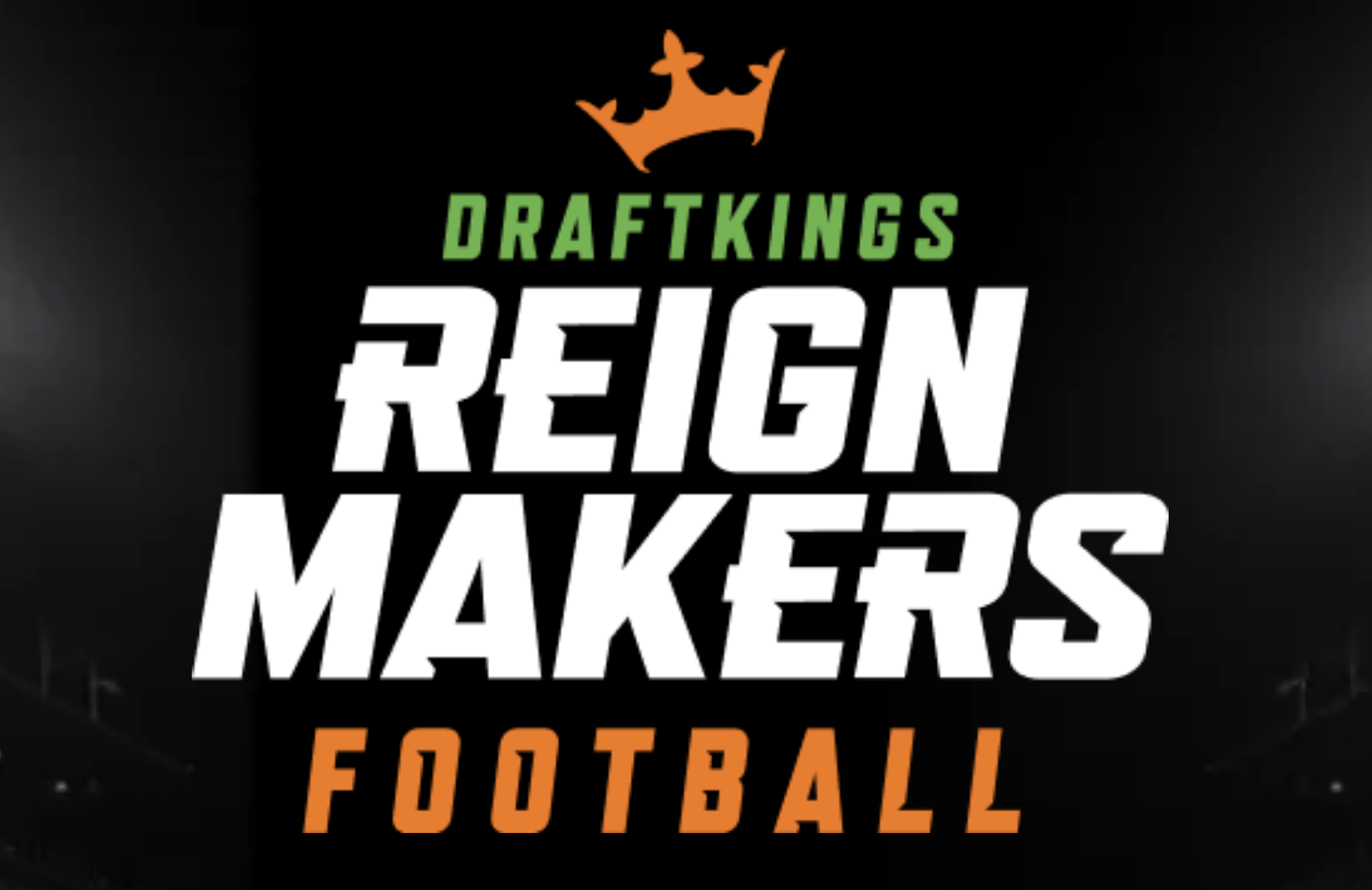
DraftKings, the daily fantasy sports and sports betting company, abruptly shut down a program called Reignmakers on Tuesday, posting a notice on its website and associated app and sending a mass email to some subset of its user base. Reignmakers, which the company launched in 2021, offered pay-to-play competitions in NFL football, PGA Tour golf and UFC mixed martial arts. The decision to eliminate the entire program, DraftKings says, was not made lightly but was forced “due to recent legal developments.”
DraftKings has yet to specify what “recent legal developments” are troubling its now-dead Reignmakers product. The company was sued in U.S. District Court in 2023 by a Reignmakers player named Justin Dufoe, who accuses the company of dealing in unregistered securities, taking advantage of relatively unsophisticated “retail investors,” and failing to market and support Reignmakers to the degree necessary to return to its users the financial benefits expected. DraftKings filed a motion in September to dismiss Dufoe’s complaint, but that motion was denied on July 2. A scheduling conference was held by the parties on July 29; Reignmakers was permanently shut down on July 30. A DraftKings spokesperson reached by Defector on Wednesday declined to confirm whether Dufoe’s complaint is the “recent legal development” that forced the company’s hand.
Users of the Reignmakers NFL product, who in recent days began murmuring on social channels about a notable lack of DraftKings activity so close to the start of the NFL preseason schedule, were caught off guard and, in some cases, devastated by the news. Members of the DraftKings Discord server, where all Reignmakers-related channels were abruptly shut down and locked following the announcement, flooded a general channel in various states of panic, sharing news, theorizing, lamenting, and, in some cases, openly worrying about whether it would be possible to recoup any decent fraction of the genuinely impressive sums of money they had invested in this DraftKings product.
Reignmakers is nominally a daily fantasy contest—users build lineups of players and then pit those lineups against other users’ lineups for cash prizes—but it’s actually a distributor of nonfungible digital tokens (NFTs), originated and sold by DraftKings, and then frequently resold on a dedicated secondary marketplace also hosted by DraftKings. At the lineup-building level, Reignmakers functions like a card-collecting game, with artificial scarcity driving the prices of the most coveted cards to insane, eye-popping heights. Reignmakers NFTs are tiered and offered in timed drops designed to heighten the sense of scarcity. A user can enter a lower-tier contest using a collection of NFTs that may have cost a few hundred dollars in total (or that were earned by purchasing random packs of NFTs that offer generally low odds of scoring top assets) and throw their lot in with hundreds of casual users competing for relatively unimpressive rewards. Random packs at the lowest tier would have prices as low as a few dollars; mid-tier cards—Star and Elite tiers, I’d guess—could cost a player upwards of $1,000.
But players interested in hunting down the biggest payouts, not just from games but from leaderboard prizes and other assorted prizes, would need to enter higher-tier games, and to enter the higher-tier games, a user’s collection needed to include higher-tier NFTs. DraftKings ensured that these cards were extremely scarce and could only be purchased directly on the marketplace at prices that any reasonable person would consider utterly insane.
For example, the highest-tier Reignmaker contests (called the Reignmakers tier, of course) have in the past been limited to listings with at least two of the highest-tier, rarest NFTs (also the Reignmaker tier) plus three NFTs from the second-highest tier (Legendary). NFTs at these tiers are expensive. Not just expensive in the way that, like, a steak dinner is expensive, but expensive in the way that buying even one of them should trigger a mandatory visit to a gambling addiction counselor, if not sirens and a straitjacket. Back in 2022a Reignmaker-level Ja’Marr Chase NFT from something called the Field Pass Promo Set could be purchased directly from the DraftKings Reignmaker Marketplace for a whopping $32,100.
Reignmakers users purchased NFTs at various levels with the expectation that owning them would convey better odds of winning contests hosted on DraftKings. This was the gamification element of Reignmakers, which emerged several months after DraftKings began trading and minting its NFTs. But as with all NFTs, a very large part of the real appeal for its buyers was the expectation, however insane, that these worthless, virtually worthless, infinitely duplicable digital images would increase in value over time. Now that both the Reignmakers game and the Reignmakers marketplace have been shut down, Reignmakers NFT holders are worried that their investments may have suddenly lost all monetary value. One Discord user described Tuesday as “a bad day to wake up and realize you have $2,000 worth of unopened NFL Rookie Packs”; Another user asked the group if they should expect “a refund” on the $10,000 they’ve already spent on Reignmakers NFTs this year. A pessimistic Reddit user posted tuesday that they would sue DraftKings if they were forced to take a total loss on a Reignmakers NFT collection worth approximately $100,000.
The game (scam?) was built to make numbers like these not only possible, but somewhat easily achievable. A user who intended to compete from a position of strength in multiple overlapping high-profile contests at the same time, and who had been in the blockchain madhouse for a period of years, could easily have spent six figures on Reignmakers NFTs. DraftKings used non-gaming incentives to entice players to spend more and more money, much like casinos give away free suites to players who over-bet on blackjack. Another Reddit user lamented the loss of the additional prizes and ranking bonuses he had hoped to earn in the upcoming NFL season by having a portfolio of NFTs that had reached the highest levels of value and prestige. “I was already loaded up on 2024 creation tokens and rookie debut cards,” said this Reignmakers userwho claimed his portfolio was finally “close to the top 250 overall.”
Dufoe’s complaint says the NFTs minted by DraftKings for Reignmakers qualify as securities, function like securities, and should be regulated as securities. In its motion to dismiss, DraftKings attempted to position its NFTs as game pieces — eye-wateringly expensive, yes, but essentially the same thing as Magic: The Gathering cards or Monopoly hotels. The court, in resolving these arguments, applied what’s known as “the Howey test,” referencing a case from 1946 in which the U.S. Supreme Court established a standard for determining whether a specific instrument qualifies as an investment contract. Judge Dennis J. Casper, in ruling against DraftKings’ motion, concluded that Dufoe could plausibly argue that Reignmakers’ NFT transactions represent “the pooling of assets from multiple investors in such a manner that all share in the profits and risks of the enterprise,” arguing that DraftKings’ absolute control over the game and marketplace effectively binds the financial interests of the company and the buyers, the latter of whom depend on the viability of both for their NFTs to retain any value.
Reignmakers users are different from Monopoly players in at least one crucial way: A person who buys a Monopoly board has no expectation from Hasbro that those little red and green pieces will appreciate in value. It’s a game! No matter what any hysterically conflicted party may say to the contrary, that’s not what NFT collecting is. DraftKings had been selling Reignmakers NFTs for months before they were gamified, and Dufoe, in his complaint, cites public comments made by DraftKings spokespeople that seem to explicitly position Reignmakers NFTs as assets with independent monetary value beyond their utility in Reignmakers contests. Judge Casper, in his ruling on the motion to dismiss, cites a Twitter account associated with a podcast run by DraftKings CEO Matthew Kalish, who in a tweet described NFTs as “the opportunity to invest in startups, artists, operations, and entrepreneurs all at once.” This is probably the kind of thing that NFT peddlers should stop saying. This advice assumes, of course, that NFTs will continue to exist as instruments on the other side of this and other lawsuits.
DraftKings has posted a worryingly sparse FAQ at the bottom of the your ad Tuesday, anticipating but largely failing to address questions from players who see this as yet another in a long line of brutal blockchain rug pulls. In a hilarious reversal of existing Reignmakers policy, Reignmakers users are now allowed by DraftKings to withdraw their Reignmakers NFTs from their DraftKings portfolios and into their personal NFT wallets, where those NFTs will have precisely zero value, to anyone, for the rest of all time. There’s also vague language about Reignmakers users having the option to “relinquish” their NFTs back to DraftKings in exchange for “cash payments,” subject to “certain conditions” and according to an as-yet-unspecified formula that will take into account, among other things, the “size and quality” of a player’s collection.
Reignmakers users are not optimistic. Those who claim to have been victims of other blockchain market crashes are warning their peers on Discord and Reddit to expect payouts that amount to pennies on the dollar; in the absence of any clarifying information, users are unsure whether cashing out their NFTs from Reignmakers to their personal NFT wallets, for reasons that completely pass any and all understanding, would effectively preclude the possibility of delivering these silly digital tokens back to DraftKings. It remains to be seen what exactly DraftKings has in mind with the “certain conditions” attached to the delivery process. There is much that has yet to be resolved. A DraftKings spokesperson contacted by Defector indicated that more time would be needed to answer a list of specific questions and issued a statement noting that it is “in DraftKings’ DNA to innovate and disrupt to provide the best possible gaming experiences for our customers.” The original complaint is embedded below.
Do you know anything about the demise of Reignmakers, either from the consumer side or from the DraftKings side? We’d love to hear from you. Get it in touch!
Recommended
NFTs
There Will Be No More ‘Mario & Sonic’ Olympics Because of NFTs
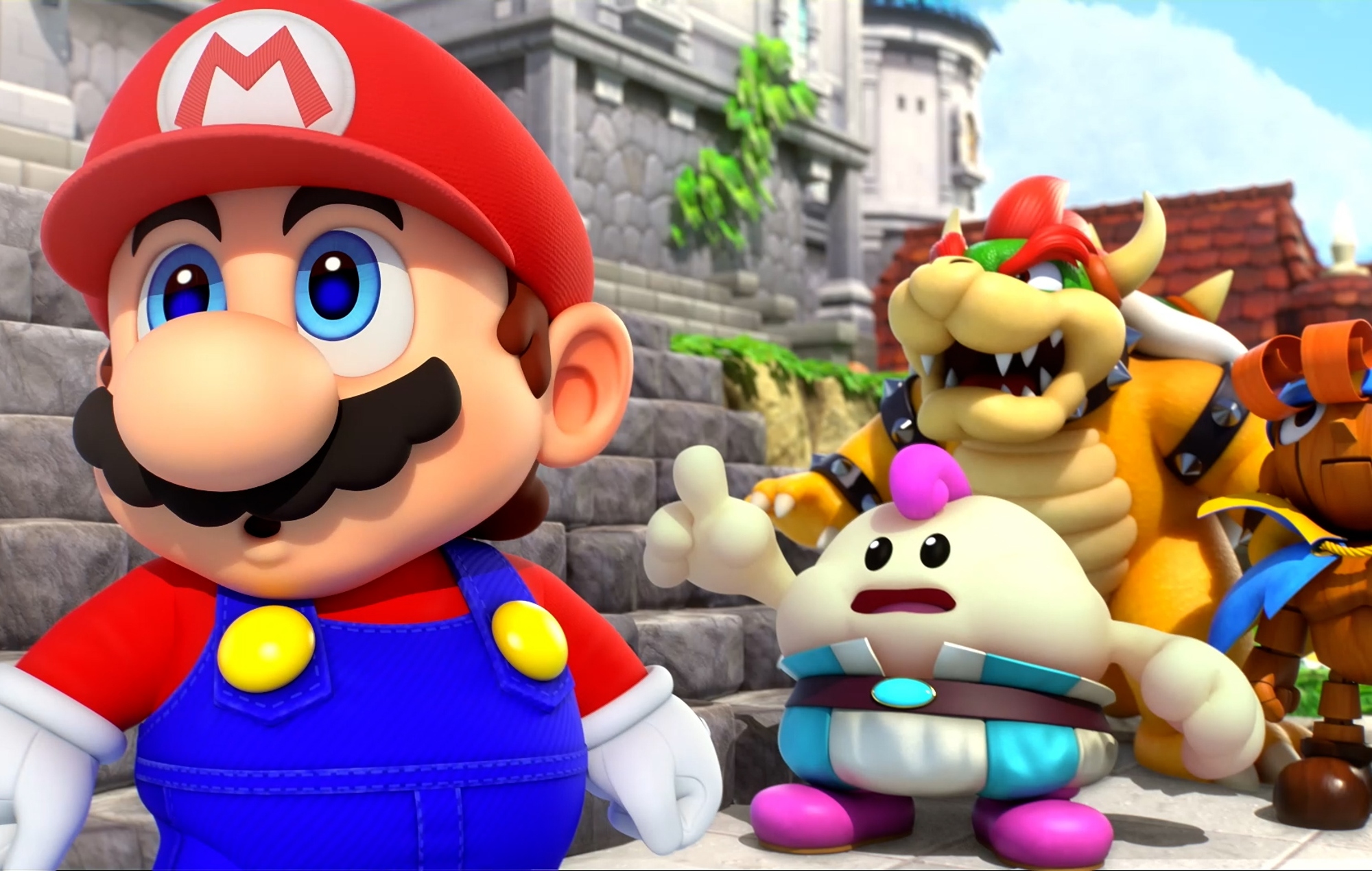
Nintendo and SEGA have been teaming up with the Olympics for several years now in the popular Mario & sonic in the Olympic Games series, but a new report claims the International Olympic Committee has abandoned the series in favor of new deals in eSports and NFTs.
According to Eurogamer“A veteran behind the series,” Lee Cocker, told the outlet that the IOC chose not to renew its license with SEGA and Nintendo, letting it expire in 2020. “They wanted to look at other partners and NFTs and eSports,” Cocker told Eurogamer. “Basically, the IOC wanted to bring [it] turn inward and look for other partners so they could get more money.”
Mario & Sonic at the Olympic Games is a series that has been running since 2008, with six main games covering the regular and Winter Olympics. In the games, players could control various characters from the Mario and Sonic franchises and compete in Olympic sporting events.
It’s no secret that NFTs are a big part of this year’s Paris 2024 Olympics. Olympics Go! Paris 2024 is a mobile and mobile-connected game your site states that players can “join the excitement of the Paris 2024 Olympic Games with nWay’s officially licensed, commemorative NFT Digital Pins collection honoring Paris 2024!”
As for eSports, Saudi Arabia will host the ESports Olympic Games in 2025. This is part of a partnership with the Saudi National Olympic Committee (NOC) that is expected to last for the next 12 years and is expected to feature regular events.
IOC President Thomas Bach said: “By partnering with the Saudi NOC, we also ensure that Olympic values are respected, in particular with regard to the game titles on the programme, the promotion of gender equality and the engagement with young audiences who are embracing esports.”
In other news, Someone claimed they’re suing Bandai Namco because Elden Ring is too difficult.
-

 News11 months ago
News11 months agoMore Crypto AI Alliances Emerge Following $7.5 Billion Token Merger — TradingView News
-

 News11 months ago
News11 months agoOver 1 million new tokens launched since April
-

 Memecoins9 months ago
Memecoins9 months agoMemecoins dominate major derivatives in terms of open interest | Flash News Detail
-
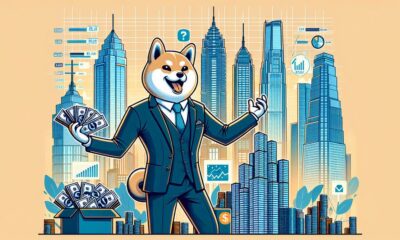
 Altcoins11 months ago
Altcoins11 months agoAltcoin Investments to create millionaires in 2024
-

 News9 months ago
News9 months agoInvest Now: The Hottest New Cryptocurrencies of August 2024 That Could Skyrocket
-
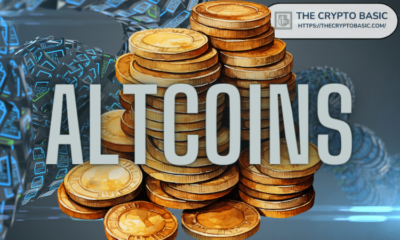
 Altcoins9 months ago
Altcoins9 months agoOn-chain data confirms whales are preparing for altcoin surge with increased buy orders
-
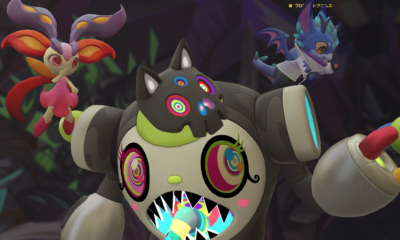
 NFTs9 months ago
NFTs9 months agoRTFKT Announces Project Animus Reveal, Launches Egg Unboxing Event Amid Mixed Reactions | NFT CULTURE | NFT News | Web3 Culture
-
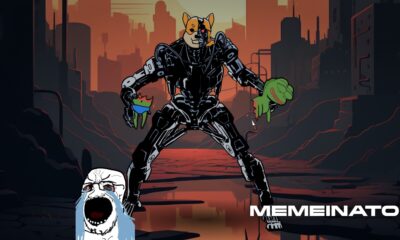
 Altcoins9 months ago
Altcoins9 months agoHot New Altcoin: Memeinator’s Price Upside Potential in July
-

 Videos12 months ago
Videos12 months agoMoney is broke!! The truth about our financial system!
-
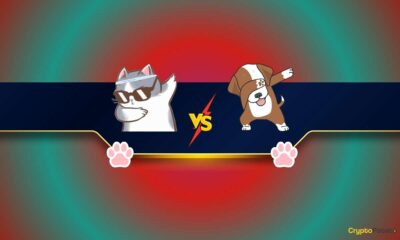
 Memecoins11 months ago
Memecoins11 months agoChatGPT Analytics That Will Work Better in 2024
-
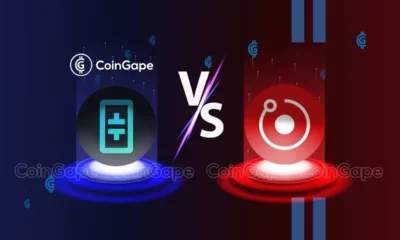
 Altcoins11 months ago
Altcoins11 months agoRender vs. Theta; Which DePIN Altcoin to buy in May
-

 News10 months ago
News10 months ago5 Crypto Airdrops After Notcoin to Watch Out for in June 2024





